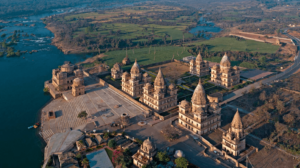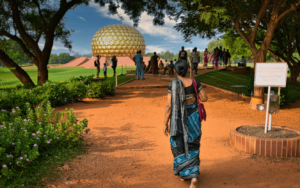In addition to the rule of thirds, leading lines are another powerful compositional tool that can guide the viewer’s eye through the image and create a sense of depth and movement. Whether it’s a winding road, a row of trees, or a flowing river, incorporating leading lines into your travel photos can add a sense of direction and draw the viewer into the scene. Furthermore, framing is a technique that involves using elements within the scene to frame the main subject, adding depth and context to the image. Whether it’s an archway, a window, or overhanging branches, framing can help draw attention to the subject and create a more immersive and engaging composition.
Key Takeaways
- Understanding Composition: Rule of thirds, leading lines, and framing are essential for creating visually appealing travel photos.
- Mastering Lighting: Natural light and artificial lighting techniques can greatly enhance your travel photography.
- Selecting the Right Gear: Choosing the best camera, lenses, and accessories is crucial for capturing stunning travel photos.
- Researching Locations: Scouting and planning for the best photography spots in your travel destination is key to getting great shots.
- Capturing Authentic Moments: Photograph people, culture, and local experiences in a respectful and genuine way to capture authentic moments.
Mastering Lighting: Lighting plays a crucial role in travel photography, as it can dramatically impact the mood and atmosphere of your images. When shooting outdoors, making the most of natural light is essential. The golden hours of sunrise and sunset offer soft, warm light that can add a beautiful glow to your photos. During midday, when the sun is at its brightest, look for open shade or use a diffuser to soften harsh shadows and create more flattering lighting for your subjects.
In addition to natural light, mastering artificial lighting techniques can also elevate your travel photography. Whether it’s using a reflector to bounce light onto your subject, or incorporating off-camera flash for more controlled and dramatic lighting, understanding how to manipulate artificial light can open up a world of creative possibilities. Experimenting with different lighting techniques can help you capture stunning portraits, illuminate architectural details, and add visual interest to your travel photos.
Selecting the Right Gear: Choosing the right gear is essential for capturing stunning travel photos. While smartphones have become increasingly capable for photography, investing in a quality camera and lenses can significantly enhance the quality and versatility of your images. A mirrorless or DSLR camera with manual controls allows for greater creative control and flexibility in various shooting conditions.
When it comes to lenses, a versatile zoom lens such as a 24-70mm or a wide-angle lens like a 16-35mm can cover a wide range of focal lengths and capture diverse perspectives during your travels. Additionally, accessories such as a sturdy tripod for long exposures, a polarizing filter for reducing glare and enhancing colors, and extra batteries and memory cards are essential for ensuring you’re prepared to capture stunning travel photos in any situation.
Researching Locations: Researching and planning for the best photography spots in your travel destination can make a significant difference in the quality of your images. Before you embark on your journey, take the time to scout potential locations by researching online, reading travel guides, and seeking recommendations from local photographers or residents. Look for iconic landmarks, hidden gems, and off-the-beaten-path locations that offer unique perspectives and opportunities for compelling photography.
| Location | Iconic Landmarks | Hidden Gems | Off-the-Beaten-Path Locations |
|---|---|---|---|
| Paris, France | Eiffel Tower, Louvre Museum | Le Marais, Canal Saint-Martin | Montmartre, Parc des Buttes-Chaumont |
| Tokyo, Japan | Sensō-ji Temple, Tokyo Tower | Shimokitazawa, Yanaka | Yoyogi Park, Odaiba |
| Cape Town, South Africa | Table Mountain, Robben Island | Bo-Kaap, Kirstenbosch Botanical Gardens | Boulders Beach, Chapman’s Peak |
Consider factors such as the best times of day for optimal lighting, potential crowds or tourist traffic, and any special events or festivals that may present unique photographic opportunities. By planning ahead and having a clear idea of where and when to shoot, you can maximize your time in each location and come away with a diverse and impressive collection of travel photos.
Capturing Authentic Moments: When photographing people, culture, and local experiences during your travels, it’s important to do so in a respectful and genuine way. Building rapport with your subjects and seeking permission before taking their photo is crucial for capturing authentic moments without intruding or causing discomfort. Engage with the local community, immerse yourself in their culture, and approach each photo opportunity with empathy and understanding.
In addition to portraits, candid street photography can also capture the essence of a destination in a spontaneous and unscripted manner. Observing daily life, cultural traditions, and interactions between people can provide rich opportunities for documenting authentic moments that convey the spirit of a place. By being mindful of cultural sensitivities and approaching photography with respect and empathy, you can create meaningful and impactful images that honor the people and experiences you encounter during your travels.
Editing and Post-Processing: While capturing great images in-camera is important, editing and post-processing are equally essential for bringing out the full potential of your travel photos. Whether it’s adjusting exposure and white balance, enhancing colors and contrast, or cropping and straightening compositions, editing allows you to refine and polish your images to achieve the desired look and impact.

Experiment with different editing techniques to develop your own unique style while staying true to the authenticity of the scene. Whether you prefer natural and subtle adjustments or more creative and artistic interpretations, editing can help elevate your travel photos from good to outstanding. Additionally, consider organizing and archiving your images to maintain a well-curated collection of travel photos that showcase your skills and experiences as a photographer.
Sharing and Showcasing: Once you’ve captured and edited your travel photos, sharing them with others can be a rewarding way to showcase your work and inspire fellow travelers. Social media platforms such as Instagram, Facebook, and Pinterest provide opportunities to share your images with a wide audience and connect with other photographers and travel enthusiasts. Utilize hashtags, geotags, and engaging captions to reach a larger audience and spark meaningful conversations around your travel photography.
Creating a portfolio or personal website is another effective way to showcase your best work in a professional and organized manner. Whether it’s for personal enjoyment or potential career opportunities, having a well-curated portfolio can demonstrate your skills, style, and versatility as a travel photographer. Furthermore, consider entering photography contests or submitting your work to publications or exhibitions to gain recognition and exposure for your travel photography. By actively sharing and showcasing your images, you can not only gain valuable feedback and recognition but also inspire others to explore the world through photography.
If you’re looking for more tips and tricks to improve your travel photography, check out this article on ToursAdda. They offer valuable insights on how to capture the best shots while exploring new destinations. Whether you’re a beginner or a seasoned photographer, their tips can help you take your travel photography to the next level. ToursAdda is a great resource for anyone looking to enhance their photography skills while on the go.
FAQs
What are some essential travel photography tips?
Some essential travel photography tips include researching your destination, packing the right gear, utilizing natural light, and capturing local culture and landscapes.
What gear is essential for travel photography?
Essential gear for travel photography includes a reliable camera, versatile lenses, a sturdy tripod, extra batteries and memory cards, and a camera bag for protection.
How can I capture the essence of a destination in my photos?
To capture the essence of a destination in your photos, focus on capturing local culture, architecture, landscapes, and people. Pay attention to details and unique elements that define the location.
What are some tips for taking better landscape photos while traveling?
To take better landscape photos while traveling, consider the composition, use leading lines and framing techniques, and take advantage of the golden hour for beautiful natural light.
How can I improve my travel photography skills?
To improve your travel photography skills, practice regularly, study the work of other photographers, experiment with different techniques, and seek feedback from peers or mentors.





More Stories
Exploring Orchha: A Comprehensive Guide to Must-Visit Sites
Things to Do in Auroville, Pondicherry | A Traveller Guide
Top Affordable Travel Destinations for Budget-Friendly Adventures